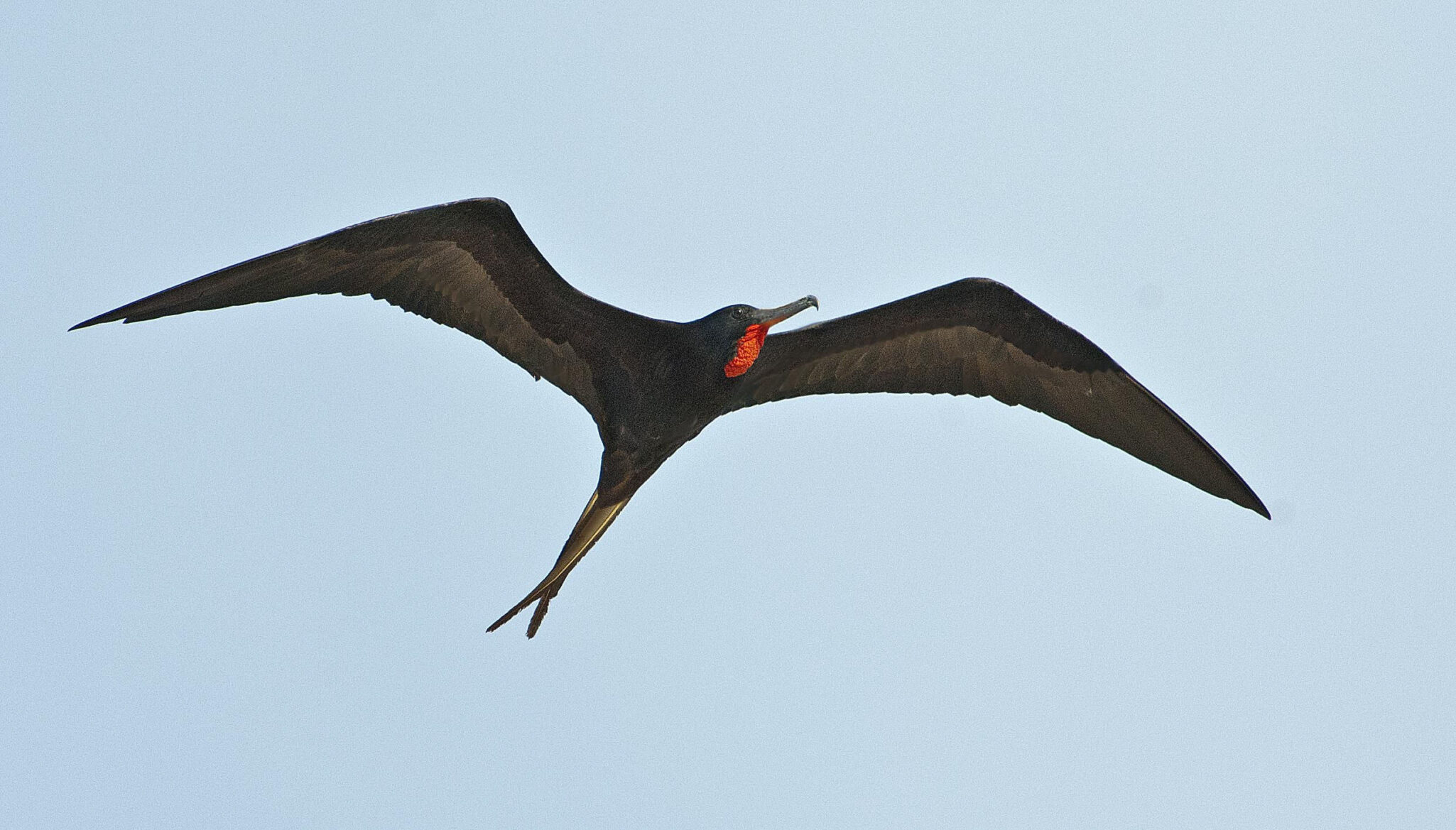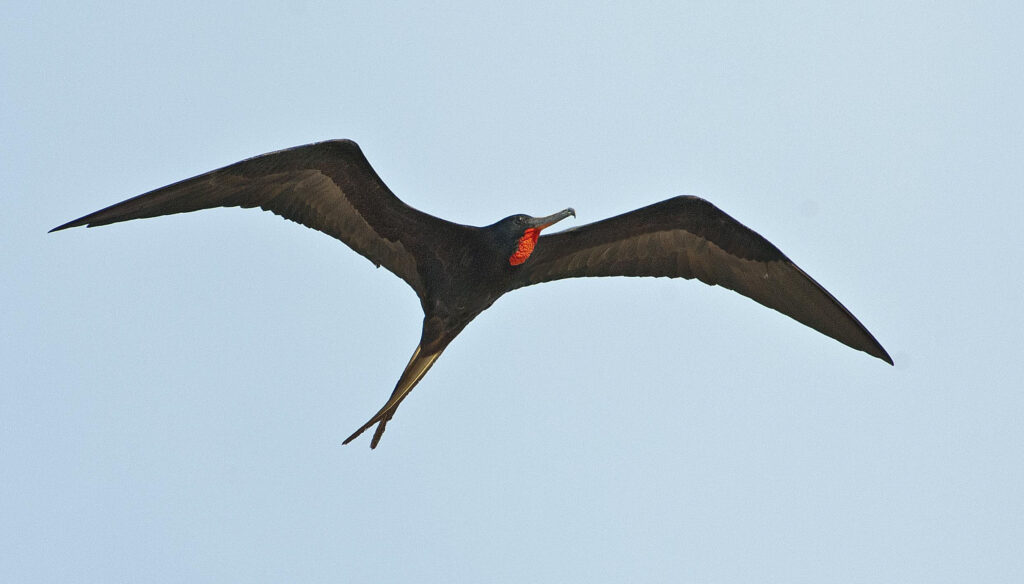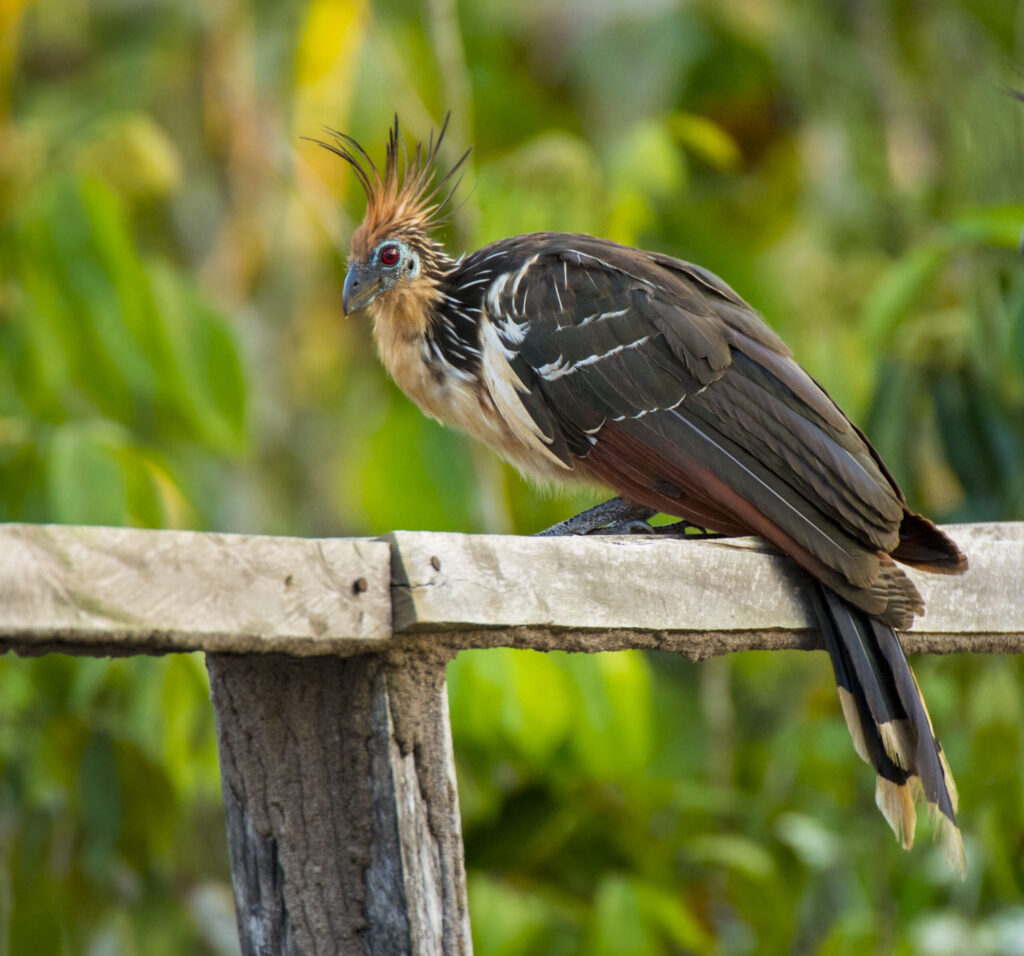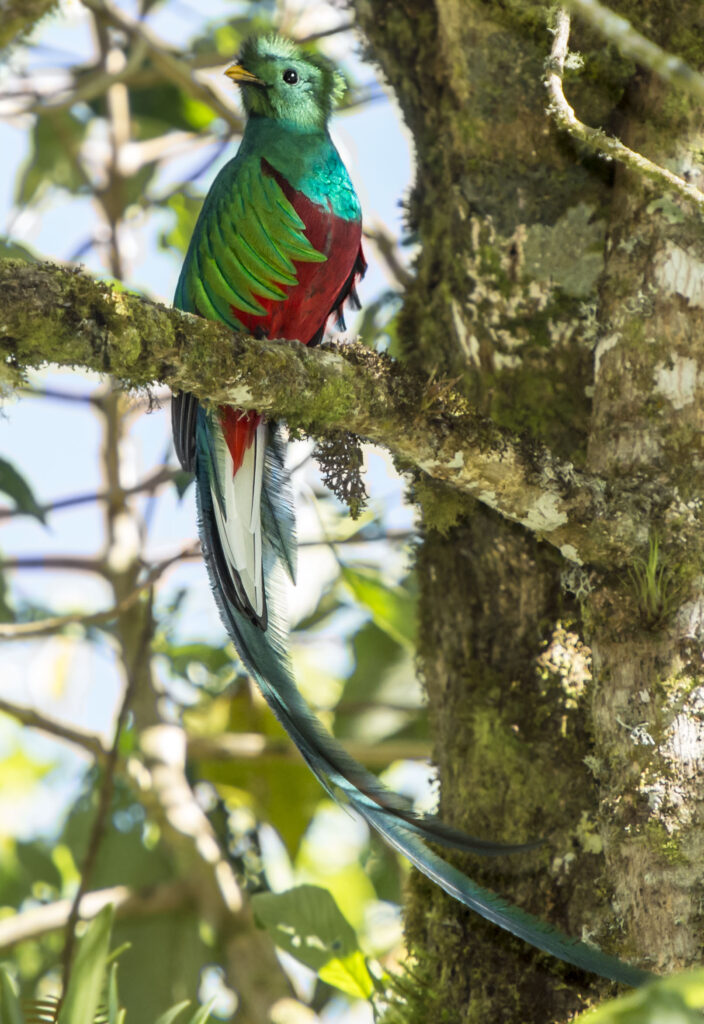
Each and every bird species in the world has a unique charm, but there are some that stand out as truly bizarre when compared to their feathered counterparts. In today’s blog we look at three such avian wonders, looking into their physiology, folklore, and cultural influence surrounding these fascinating species.

Pirates Ahoy
Long, angular wings, a forked tail, and a striking scarlet throat pouch make the Magnificent Frigatebird truly a bird apart. The males are most famous for inflating their scarlet gular sac during courtship, as this is attractive to the females whose white breasts and bellies are strikingly set against the same pitch-black plumage. Their range extends over the tropical and subtropical waters off America between northern Mexico and Perú on the Pacific coast and Florida and southern Brazil along the Atlantic coast, and these birds have long been associated with pirates, due to their kleptoparasitic feeding strategy – they steal food from other seabirds in mid-flight. That forked tail enables incredible aerial agility allowing them to chase down other birds and force them to disgorge their meals. The deep black and red of their plumage evokes images of swashbucklers, and they are embodied as such in numerous maritime tales and folklore.

Stomach Turner
The Hoatzin is a fairly large bird with russet wings, a streaky white chest, and maroon eyes set in a blue unfeathered face topped by a spiky crest. Alas, this impressive appearance becomes somewhat undermined when you get close to one, as they emit a foul stench. Also known as stinkbirds or skunkbirds, they live in the swamps and mangroves of the rainforests of South America, and their diet consists of 80% leaves, making it a folivore, with the other 20% made up of fruit and flowers and the odd unintentional insect. In order to digest all of that foliage, it ferments its food using bacteria, in exactly the same way that a ruminant does. However, unlike cows, hoatzins don’t possess the special stomach required for this so instead this fermentation takes place in an unusually large crop just below its beak. This makes the bird exceptionally fragrant, hence the alternative names. The reason for the existence of this species has long been debated by evolutionary biologists, not helped by the fact that as a chick it has claws on its thumb-bone which it uses to clamber over tree branches until it can fly, after which the protrusions disappear as it ages into adulthood. In indigenous Amazonian folklore, the Hoatzin is associated with spiritual qualities and is a guardian of the rainforest.

Serpent Bird
The Resplendent Quetzal is a bird of incredible beauty and is the only bird in the world with the word resplendent in its common name, which means to intensely shine and glitter. The males’ blood-red breast is accentuated by striking emerald-green plumage over the rest of its body, including their long tail feathers, which can grow up to three times the length of their body. These feathers evoked the image of a snake to the Ancient Mayans and Aztecs who considered it a sacred bird who embodied the god Quetzalcoatl, a feathered serpent deity symbolizing creation and rebirth. They are also altitudinal migrants, moving between the upper canopy of the montane cloud forests of Central America to the lower slopes as the seasons change. To see a Quetzal was considered a rare and auspicious event believed to bring good luck, and their name even became the currency of the Aztec Empire. The cultural significance of the Resplendent Quetzal persists to this day in Central American countries like Guatemala, where it is the national bird and a symbol of freedom.



